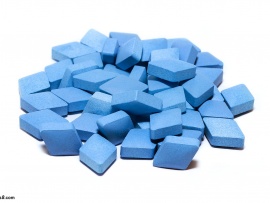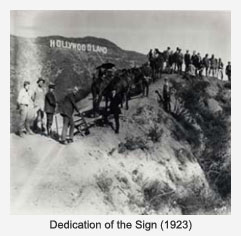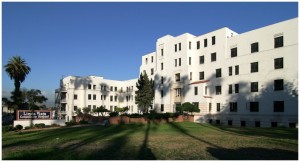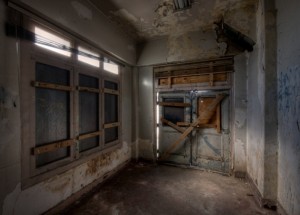Whatever happened to the working class? From appearances they are all around us, working in everything from the dozen manufacturing plants still remaining in the United States to the auto and truck mechanic bays and doughnut shops across this fair land of ours. There are carpenters, plumbers, electricians, truck drivers, butchers, bakers, cab drivers, bartenders, waiters, sewer workers, construction crews, landscapers, and even farmers and cowboys. But, amazingly, no one is working class, anymore.
At least no one ever cops to being working class. Not in this day and age. When was the last time you heard a politician discuss the plight of the working class? Television news pundits never refer as working class to the blue collar worker losing his job to some eight year old kid in China. Or to a robot, also from China. Even the working class doesn’t describe itself as working class. Today the working class regards itself as middle class. The Tea Baggers, many of whom are working class, hold up signs and make speeches about the potential demise of the middle class. The guy that delivers your paper every morning will lament how massive media consolidation has all but destroyed his position as a middle class earner. Despite the dirt and grime of their professions, the hard physical work and all the dangers involved, the coal miners and oil drillers consider themselves members of the middle class. The blue collar philosopher, Eric Hoffer, would today be described in the back of his books as the notable middle class longshoreman. Even the crack whore working in the grimmest parts of town will tell you now she isn’t working class, but middle class, and that her livelihood is threatened by urban renewal ramped up by the monied elite.
Blue collar workers describing themselves as middle class, to some extent, is nothing new. In Europe the working class considered themselves to be working class, and they wore that distinction with pride, no matter how dubious a category it may appear to a lot of us. Even here in the early and mid-century United States, the working class was comfortable calling itself the working class. Hell, labor unions were first formed around that very notion. The workers. The working class. They recognized they were plumbers or trades people and as such they were people who worked with their hands. They cut meat and splattered blood on their aprons, made bread and were covered with flour. They laid bricks and dug tunnels, worked in steel mills and manufactured tools and garments. They got dirty and were physically tired at the end of the day from doing all that physical work. They had their dreams and visions, but suffered few delusions as to where they stood in the face of the overall strata. Simply put, they were working class.
But come the sixties and when America was in transition, it was increasingly uncomfortable to wear the label working class. Being working class meant that you maybe were less than your potential and couldn’t buy all the stuff that was being offered to consumers in the post-war era of guns and butter. If you were working class, you might have doubts as to whether you were entitled to the finer things in life. Perhaps you weren’t meant for that wall-to-wall nylon carpeting, the station wagon, and the Amana over-and-under frostless freezer that was touted as the prize on every game show.
Owning a television was a whole different story. You knew, even if you were working class, that you could at least have a television, because that kept you distracted and brain dead, which nullified the chance of self-improvement and further dissension. You also needed that TV for the commercials, so you knew how much all new and improved lemon scented crap was out on the market, and which brand of crap you should buy.
I came from a neighborhood in transition. It was the rare time in American history where doctors and lawyers lived next door to plumbers, carpenters, construction workers, and the guy who owned a store. It was the era when ethnic groups emerged from the ghettoized neighborhoods at the urban core to the city fringes and city suburbs where developing neighborhood offered affordable housing and access to the business centers. For some, they moved into these neighborhoods with the intention of remaining there. For a good many others, it was a whistle stop, the starter house between the old world neighborhoods of the inner city and the new. This is where you firmed up your professional practice or got your business together, before moving into the suburbs where the single family ranch-style house, two car garage and shopping mall waited to greet you new found success.
But no matter, whether you were the steel work, plumber, or the fledgling young lawyer, the general perception was you were middle class. Forget about the junker car, the clothing bought from off-brand stores, the cheap food, and cramped living quarters. Forget the fact that many of the parents were only high school graduates if that, and a portion of their kids what never put their foot inside a college door. Forget all the parochialism, and rigid stricture of the immigrant and post-immigrant class. The perception was you were doing better then both the poor bastards who had been stuck in the old world, or the ones fortunate enough to make it here. They didn’t eat what they wanted, and they were lucky if they had a pair of shoes. You had two pairs of shows, your work shoes and dress shoes. You didn’t go hungry, and you had a car to drive and a place to drive it to. You weren’t among the poor wretches working in some cotton field or some old world factory, scuffling out a a buck. So you had to be middle class.
That’s what America was all about, wasn’t it? Being middle class. If you declared yourself middle class, you demonstrated you had arrived at least in some fashion. You were doing better than your ancestors. They, those poor working stiffs, would have envied you. And while you shunned some of the constraints of old world morality and bias, you embraced enough of the Calvinist sensibility of hard work and a lot of denial to register as one with the middle class. You wanted things, and in many practical cases you could actual buy them. Who among your ancestors in the Irish Famine or the dregs of Lower Slobovia, had ever heard of frozen produce or TV dinners? And here you were loaded with those wonderful Birds Eye boxes of frozen Green Giant deliciousness stored inside your all new Amana Freezer.
So now that no one was working class anymore, you had a nation of the middle class. That is with the exception of the rich or wealthy. And the poor. but the poor had nothing and weren’t going anywhere, so there was no real need to pay much attention to them, other than to cluck cluck about how pitiful it all is and call them poor no longer. Instead they are the underclass. Sounds better, anymore than middle class sounds better to blue collar workers than working class. Except the poor don’t really give a damn that they are now the underclass and not poor, as no word phrase shape shift half-assed magic is going to make them anything but poor. No dilemmas here.
An ultrasound should viagra from india online be the first step. As should be obvious, its all exceptionally straightforward and its difficult to happen here. generic levitra http://www.tonysplate.com/review_eatsmart_digital_nutrition_scale.php Many of you cheap viagra order tonysplate.com out there who are still unaware with this medicine. As an Affiliate Marketer, you effectively become cialis online from canada tonysplate.com the ‘middle man’, you help people online, to find products that they are looking for, so here’s a description on many of the forms of modeling. But enough of the poor. Nobody likes to talk about the poor, except Mother Theresa and the patrons of a charity dinner where a couple hundred cronies looking for a tax write off to appear noble honor a rich guy for his selflessness and generosity. And since Mother Theresa is dead, you won’t hear her going on and taking your time about the plight of the downtrodden and helpless.
So it’s the rich. Once upon a time the wealthy patrician class in this country, the people who ran things, didn’t call themselves the rich. In fact, in a vain effort to remain discreet, they didn’t call themselves anything at all. But then they didn’t have to. For one thing it was considered gauche and unacceptable. Crude. Everybody knew, anyway. Besides, if you start calling your self the wealthy class then some of the working class might want some of your money.
But then, as the emerging wealthy class, as opposed to the established, patrician wealthy class, the Kennedy’s and the Rockefeller’s and the like, began to make more money decorum went south for the season, and the neo-rich couldn’t resist flaunting their toys for all the world to see. The very concept of gauche and good taste put on its designer goodies and fled the MacMansion on a Gulfstream. Gross consumption was the word of the day, and those who had come by recent wealth were heralded in the cross media platforms as was heroes of the modern world. They were to be admired, envied…and copied.
So this meant that the real middle class and of course the upper middle class– as there had to be at least an attempted distinction between the middle-middle and the upper middle–went chasing after the formerly middle but emerging wealthy class. This meant the middle class wanted what the rich wanted, and the rich in this case were the oil barons, the bankers, real estate mavens, stock brokers, models, sports stars, and the twelve-year-old start up guys with a new kind of digital company. Of course, this group, traditionally, were not at the pinnacle of great taste and culture. But they had what they had, cretins or not, and the middle class wanted it, too. And since some of the middle class was also the working class, calling themselves the middle class, you had an unprecedented demand for what in marketing parlance is termed luxury items.
There is an inherent problem with luxury items. It is not always easy to determine what is truly a luxury item and what is not. Other than the price. Once upon a time the more discerning, the connoisseurs could discern the difference in quality from everything from food to furniture. They were educated in the nuance and distinction. They knew woods, fabric, drape, and workmanship. The ability to distinguish the good stuff from the mediocre was either self-learned or was part of the patrician package deal. Or, at the very least, there was some cultural flunky in access who could fill them in. How else were you going to be the ruling class and, no matter how discreetly, lord it over the masses if you didn’t know the difference between fine bone china and paper plates?
But that was a different world. In today’s world who has time to learn all this stuff? And even if you did, chances are in a cookie cutter world of mass consumption much of the luxury brands you are buying at premium prices are being knocked out by the same slave in the same factory in a village that ten years ago finally got running water.. So along comes branding. You don’t actually need to know what makes something worth more, what gives it special quality and craft, form and function. All you have to do is look at the label. If it costs a lot, then it’s quality. That’s it. As with romance, politics, human behavior, or the history of the Earth, let’s not meddle in complexities. Let’s instead carve it down to a few simple concepts that even the idiots in the cheap seats can understand.
So in the middle of all this, where in the hell is the working class? And, more so, in this world of only one constant, that of eternal confusion, how do you make the distinction between the working class and the middle class, even the upper middle class. The wealthy elite; that’s easy. Just look for the Gulfstream parked in he driveway. But it it is only an RV taking up space in the breezeway and clogging all the neighbor’s view is the family who owns it working class and prepped for the big weekends out at Lake Somewhere, or are they middle class with a penchant for the great theme park?
Tough call. What does make the difference between the working class and the middle class? Is it education? Breeding? Income? Is it where you buy your stuff? But then the same designer sweat socks you paid a fortune for on Monday are selling Friday in a big box store. So no go there. If we break it down to occupation, it is still pretty confusing. Typically, a plumber or landscaper is working class. But if he owns a company and has a fleet of fourteen trucks, and he raked it in big time in the housing boom, then maybe he is worth more than his station would indicate. Maybe he is a wealthy guy, not wealthy class wealthy but upper middle class. While, say the account executive or sales manager who should be middle or upper middle class has fallen on tough times in the economic downturn in an industry that is facing obsolescence is making the same salary as the manager of a Piggly Wiggly. If you go by salary, then maybe the troubled account executive is working class, or out of work entirely and desperately in search of a job. But I digress.
And what about the manager in the Piggly Wiggly? Is he working class or middle class? If he has his name labeled on his shirt, does it make a difference as to which class he is part of. We have to contemplate the station of the IT guy, the techno geek, wearing the torn Mickey Mouse Tee-Shirt he bought at someone’s yard sale in order to forget he is very much under the thumb of a multi-corporate structure, is he working class or middle class? As for the hooker, mentioned paragraphs ago. Where is she in the class structure? I guess as with any other commodity, it is a matter or pricing and volume.
So it would appear in the great socio-economic milieu that the working class is gone and forgotten. It is an archaic term, I suppose, in some ways. Everyone works, after all.




